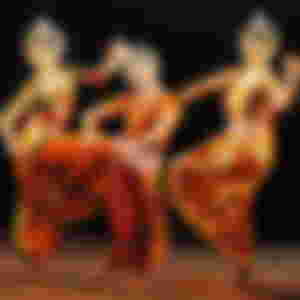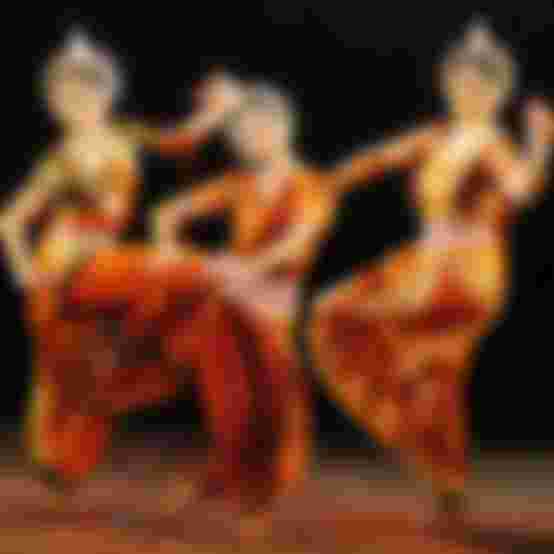
Bengali culture usually refers to the combination of literature, music, fine arts, sports, humanity, excellence of knowledge and many more peace and beauty of a particular society.
Even so, in a broad sense, culture is the knowledge, behavior, beliefs, customs, morals, customs, collective attitudes, social institutions and achievements of the people.
Anthropologically culture is again a complex concept of a different kind.
Since all cultures are distinct in terms of origin, development, values, and organization, one culture differs considerably from another in its outline, its various manifestations, and its essence.
Over the thousands of years, Bengali culture has evolved as a result of various ethnographic and religious groups and branches, intermingling, interaction and coordination.
Over the centuries, the coexistence and integration of different, even, contradictory elements of culture has given rise to a feature of Bengaliness in the Bengal region which is called Bengali culture and in a word, the culture of Bengal and Bengali speakers.

The basis of Bengali culture Since Bengali culture is the culture of Bangladesh and Bengali speakers, the regional culture cannot be termed as Bengali culture, at least before the formation of a separate region called 'Bangala' or before the Bengali language became fully Bengali.
It is also acknowledged that Bengali culture was not born from the time of the formation of the Bengali state or the Bengali language during the Sultanate period.
The foundation of Bengali culture was laid much earlier.

There were many states in this vast area known as Bangala - Gaur, Radha, Dakshina Radha, Suhm, Barindri, Harikela, Samatat and Banga.
Besides, there were more small kingdoms at different times.
In the 1350s, Sultan Shamsuddin Ilyas Shah of Gaur conquered Sonargaon and took the title of 'Shah-i Bangalian'.
The greater ‘Bangala’ was not born before him.
On the other hand, the Bengali language also acquired its own characteristics at that time and took the form of a distinct language.
Considering from both sides, the age of Bengali culture is therefore eight shows or at most one thousand years.
It cannot be considered older than this.
But this culture was developed based on the thousands of years old cultural heritage of the region.
It can be said with an example that the name of Bengalis is 'Veto' because of their eating habits.
Neither Aryans nor Muslims brought paddy to this country, paddy cultivation started in this region at least five thousand years ago.
Later the Aryans, sometimes the Sens, sometimes the Turks, sometimes the Afghans, sometimes the Mughals and finally the British occupied the land of Bengal, but the habit of the Bengalis to eat rice did not change.
Rice is a cultural base of Bengalis.

The reason for the uniqueness of Bengal culture is that although it has considerable similarities with other cultures of the Indian subcontinent, it has gained its own identity due to its geographical features and diverse ethnographic combinations.
It is located at one end of the Indian subcontinent, hundreds of miles from the long-ruling capital Delhi.
Religion, philosophy and ideas, cultural trends and governance - whatever has come to this marginalized land, have in a short time been influenced by the Bengali character.
In addition, the wide river-tributary rivers and forest-filled Bengal have again been divided into many parts, as a result of which the culture has gained some uniqueness in these regions as well.
These subcultures are also characterized by race, religion, caste, and many dialects.

Bangabhumi is far from the place of origin of major religions like Vedic, Buddhist, Jain and Islam, so none of these religions reached the region in its original and unadulterated form.
Moreover, local religious beliefs and practices have been combined with these foreign religions.
Thus, just as the Hindu, Buddhist, Jain and Islamic religions of Bengal are characteristic of Bengal, so are some of the similarities between the followers of different religions in their religious rituals and social customs.
In the 7th century, the Chinese traveler Hiuen Tsang wrote that he saw many similarities in the religious philosophy, manners, and social customs of the local people of different religions.
He further noted that Bengali Buddhism was very different from the original Buddhism

Settlement and Anthropology Apart from the relatively high areas of West, North and Central Bengal, other areas of ancient Bengal were sparsely populated.
It seems that as thousands of villages have developed as a unit of population now, they did not develop in such a large number before the Sultanate period.
There is no mention of the village in the Charyapada, the original specimen of the Bengali language written from the tenth century.
People then seem to have lived in ‘Puri’ and ‘Nagar’ for security and production.
This feature of the settlement was probably the main reason for the development of sub-citizen feudal culture.
Ethnically, most Bengalis are Austro-Asiatic, but the Dravidian group is also involved.
Apart from these two major ethnic groups, there has also been a fusion of Tibetan-Chinese and Semitic blood among the Bengalis.
Social Structure Bengali society is patriarchal and hierarchical from the very beginning.
Although it is not known exactly what the social structure was like before the Aryans came to Bengal, it does not seem that there was any caste system in the pre-Aryan period.
On the other hand, in the Vedic religion brought by the Aryans, the whole society was arranged in four levels according to caste and caste system.
These are Brahmins, Kshatriyas, Vaishyas and Shudras.
Although the number of Brahmins was small, they were the most respected and influential in the society;
And the vast majority of the society - the Shudras were the most

The practice of caste is the manifestation of caste.
According to this custom, the Shudras are untouchables.
The number of Kshatriyas was very low in Bengal.
The Kayastha community was later formed with Vaishyas and some other groups of Hindus.
In addition, the medical community is involved in the medical profession.
Theoretically, there should not be any caste system between Buddhists and Muslims, but when they came to Bengal, they too were influenced by this system and fell into a kind of caste system.
During the time of the Sena kings, the Buddhists were classified as Shudras and were called ‘Neda’ (head-wrapping).
After the arrival of Muslims, caste Hindus also considered ordinary Muslims as Shudras.
Muslims themselves divide their society into Ashraf and Atraf.
Atrafs were mainly indigenous and lower class Muslims.
The Muslims were so impressed by this classification that they maintained it in mosques, where there were high seats for the Sultan and his relatives.
Besides, Ashraf and Atraf did not get married, nor did they eat together.
Eighty percent or more of the Bangasamaj are Shudras and village Muslims.
They were directly involved in the production system - farmers, laborers and professional skilled workers like barbers, fishermen, carpenters and weavers.
In the Middle Ages families were not single families, though families


The oldest known king of Bengal is Shashanka.
This king of the seventh century was a Hindu.
On the other hand, the reign of the Buddhist Pala kings began in the next century.
Shashanka was not only a patron of Hinduism, he persecuted Buddhists.
Although the Pala kings patronized Buddhism for centuries, there is no evidence that they persecuted the Hindus.
The Sena dynasty that came to power after the Palas was an ardent patron of Hinduism.
There is evidence that Buddhists were persecuted during their time.
During their rule, Buddhism lost its glory and the number of Buddhists declined rapidly.
The Sena, moreover, strictly practiced casteism and patronized Sanskrit scriptures and literature.
When Bakhtiyar Khalji defeated Laxman Sen in 1204 and introduced Muslim rule, another wave of change came.
Many Muslim missionaries came to Bangabhumi after Khalji.
In part, with the help of the Sultan, they began the work of initiating the local people into Islam with enthusiasm.
Although it is not clear how successful the work of initiation into Islam was in the first two hundred years, the number of Buddhists dwindled and the construction of Hindu temples came to a complete halt.
The caste system of the Sena is strong

In the next few centuries, Islam evolved considerably in Bengal.
The locals were attracted to the devotional Islam preached by the saints from Persia.
Arab missionaries, on the other hand, brought in radical Islam, which did not attract locals.
By the seventeenth century, Bengali Islam had taken the form of a local cohesive religion similar to the earlier Buddhism and Hinduism, and the lower strata of society were influenced by Bengali Islam.
In the face of this onslaught of Islam, reforms continued in Hinduism as well.
For example, Devibara Ghatak tried to introduce the rules of caste system more firmly to protect the sanctity of Hinduism.
But the tide of time was flowing in the opposite direction.
In this situation, at the beginning of the sixteenth century, Chaitanyadev (147-1533) preached the Vaishnava religion based on the ideals of devotion and love.
The caste system which divided the society into permanent classes and which was the main tool of social oppression, was completely denied by Chaitanyadev.
This religion not only protected Hinduism from the onslaught of Islam, but also brought a new tide to Vaishnavism and Hinduism as a whole over the next two centuries.
Moreover, its influence also gave birth to devotional communities like Sahajia, Baul and Karta-Bhajar.
These communities are the first to deny caste

Since the verbal form of the Sanskrit language is derived from Prakrit, the major part of the words in this language is either Sanskrit or the evolutionary form of the Sanskrit word (such as Chandra to Chand).
However, some words of the original languages of the region have also remained in Bengali (such as rice, dhemki).
Some features of the local language have also influenced the external Bengali (e.g., in some verbs).
Muslim rule influenced the Bengali language in two ways.
First, at this time thousands of Arabic-Persian words entered the Bengali language.
Second, the Bengal which had been neglected by the Sena and hated by the Brahmins, began to be patronized by the Sultans from the fifteenth century onwards.
In the seventeenth / eighteenth century some Portuguese words also came into Bengali (such as pineapple).
The wave of foreign languages started once again in Bengali language after the establishment of British rule.
Due to that, thousands of English words have become everyday words in Bengali.
English also has an effect on syntax and punctuation (e.g. commas, semicolons, exclamation marks).
Apart from this, the English administration also tried for the last few decades of the eighteenth century to increase the practice of the local language Bengali and to remove Persian from the language of the courts of law.
Like other aspects of Bengali culture, the Bengali language is flexible and cohesive.
After the introduction of printing press and new type of writing

Then in the nineteenth century, under the influence of English literature, Bengali poets and writers began to express humanity and their personal passions and feelings through their writings.
This new literature is not God-oriented, but human-oriented.
The content and the main idea of literature changed during this time.
This is a turning point in the history of Bengali literature.
In fact, it was with this humanist new literature that the Bengal Renaissance began.
Ishwar Chandra Vidyasagar, Michael Madhusudan Dutt, Bankim Chandra Chattopadhyay and Rabindranath Tagore have made great contributions in this.
When rewriting Hindu mythological literature, the first two reinterpreted them and turned the gods and goddesses of this mythology into human beings;
And the last two do the same thing, but in a slightly different way.
The development of the formal education system and the establishment of the printing press brought about a flourishing of creativity in Bengali literature that had never happened before.
However, it is also true that the development of printed literature, which led to the flourishing of folklore and oral literature in the Middle Ages, quickly dried up.
Moreover, civic literature developed unequally between Hindus and Muslims, as Muslims lagged far behind Hindus in both English and Bengali education.
However, by the end of the nineteenth century, the gap between the two communities had gradually narrowed

Although Bengali literature was somewhat influenced by Sanskrit and Persian literature until the middle period of the colonial period, as Bengali society was predominantly rural, it was largely folk.
English education and literature give it a civic character.
Nevertheless, the influence of folklore, though a little weak, continued into the nineteenth and twentieth centuries.
As the roots of the civic community are also deeply rooted in the village, there is a tendency in Bengali literature to look back at the village.
For example, in the writings of Jibanananda Das and Bibhutibhushan Bandyopadhyay, or Jasimuddin and Al-Mahmud, the village comes back again and again in various forms.
This tendency to look back at the village can also be noticed in the numerous novels and plays of today.
Like music, drama, cinema literature, the legacy of Bengali music is also rich.
Much of the Charyapada and medieval literature was actually songs.
Which raga and rhythm should be sung has been mentioned at the beginning of each charya (Srikrishnakirtan too).
From the names of ragas like Gaur and Bengal and later on Bhatiali, it is understood that the subdivision of Bangabhumi and its own genre of folk music developed in antiquity.
Vaishnava musicians introduced Bengal's own style of devotional kirtan songs in the Middle Ages by combining raga and folk music and gave it an authentic form.
R-R of Bengal is a prominent devotional music
In the twentieth century, several other well-known theaters were established and powerful actors like Shishir Bhaduri and Ahindra Chowdhury appeared.
And after a while the journey started in cinema and television.
Although Bengali theater is not yet world class, some of Ray's films in particular have gained worldwide fame.
The film industry in Bangladesh, however, lags far behind due to lack of opportunities and qualified actors and actresses.
Since the inception of the multi-faceted theater group in the 1940s and the performance of Nabanna Natak, both Bengali theater and drama have improved considerably.
Due to the negative attitude of the Muslim community, the performance of drama in Bangladesh did not get any encouragement for a long time.
But since independence, there has been rapid progress in the theater of Bangladesh.
Over the centuries, Bengali culture has acquired sophistication and sophistication, which has not only acquired a civic character, but also an international character.
Nevertheless, ordinary Bengalis are mainly fascinated by folk elements.
Devotionalism with Bengali folk literature, folk music, folk dance, folk drama etc. accurately reflects the Bengali psyche.
The tide of British colonial rule and change The Muslim rule from the thirteenth to the middle of the eighteenth century can be summed up as a change of ruler - Muslim instead of Hindu.
But as a result feudalism of Bengali society
It has already been said that apartheid had a serious impact not only on the religious system but also on the social fabric.
This custom permanently determined what a person would do for a living.
According to this custom, the descendants of the prisoner will be imprisoned for generations;
In the same way, the descendants of the barber expected the barber, the descendants of Jola, the descendants of the sweeper, the descendants of the sweeper, the descendants of the Vaidya, the descendants of the Vaidya and the descendants of the Brahmins to perform religious duties.
The Muslims of the village also practiced this custom.
So most of them were involved in agriculture for generations.
During the colonial period this strict practice began to relax and unlimited mobility came into the society.
People from the lower strata of society, including Muslims, did not move towards English education for a long time out of loyalty to tribal scholarship or take advantage of the benefits of the new age.
As a result, they lag far behind the caste Hindus and upper class Hindus in education.
During the colonial period, Bengali society progressed unevenly and mainly the people at the bottom of the society benefited from it.
Nevertheless, there was a tremendous outpouring of creativity in many aspects of nineteenth-century society and culture.
Especially in language, literature, music and drama, as well as in performing arts, architecture, religion and social reform, and even in many economic activities.
The language movement (1947-52) was born during the Pakistan period as a result of the development of education on the one hand and exploitation and attempts to impose a different language on the Bengalis on the other.
Until the coup d'etat of independent Bangladesh in 1972, this language movement greatly influenced the politics of the country.
Moreover, the artificial reconciliation between the two parts of Pakistan, which was based solely on religious nationalism, soon led to a crisis of sorts among the Bengali Muslims.
They were never sure whether they were Bengalis or not, but after the language movement they joined the language-based secular Bengali nationalist movement.
This had a direct effect on the increased practice of Bengali language and literature.
Finally, in the literature of East Pakistan, a kind of Bengali with a slightly different taste can be noticed from the standard Bengali language.
Moreover, the positive results are that their perpetual aversion, even, distrust and hatred towards the Hindu community is reduced.
In West Bengal, too, competition for jobs with Muslims has diminished, and mistrust and hatred towards Muslims has diminished within decades of partition.
Although the closeness between the two communities was not born.
Partition, the emergence of independent Bangladesh, as well as the discovery of life-saving medicines and vaccines in two
Although Bengalitism, especially in modern times, has taken on a diverse form of Bengali culture, it still retains some of its features, which have established a permanent seat in Bengali society over the centuries.
For example, Bengali women can still be easily distinguished from a group of women in the subcontinent.
Despite the increasingly busy lifestyle, Bengalis prefer a relaxed lifestyle and a few love to hang out together.
Many of them like to jump together without thinking about the long-term results.
Although they have become modern in many areas of life, there has been little development of individuality among them.
The bond of kinship between them is very strong.
With few exceptions, the wedding is arranged by the parents, and there is little premarital or extramarital love between them.
Although poverty and landlessness have increased among the rural population, a culture of competition and self-aggrandizement has developed between the middle class and the rich.
The vast majority of Bengalis used to be dependent on agriculture, but as a result of the population explosion in the twentieth century, many Bengalis have now moved to the cities instead of the villages and become low-skilled or unskilled laborers.
Another characteristic of Bengali characters is that they generally believe in flexible moderation and harmony.
That is why they are against any extremism







This is the tradition of Bengalis for many years. It has observed this for many, many years